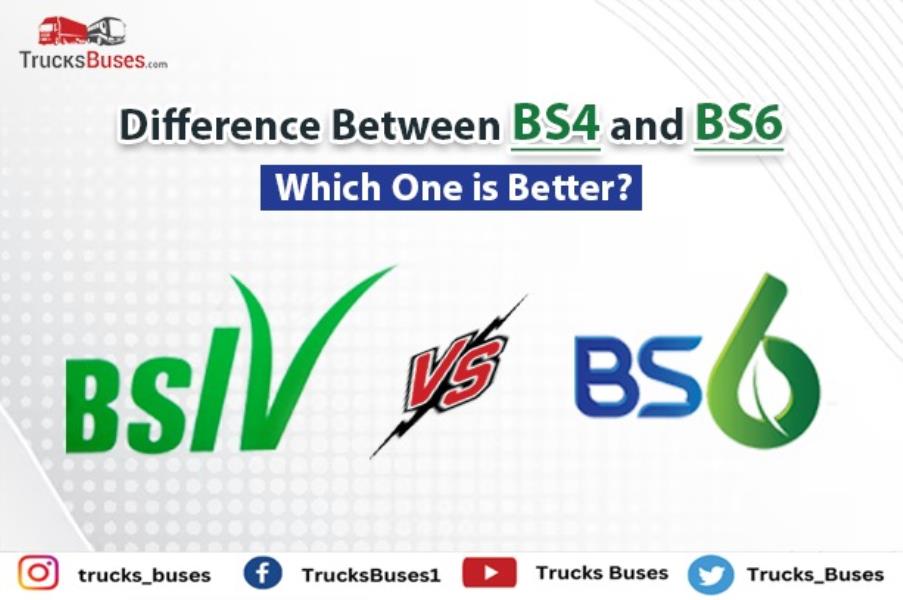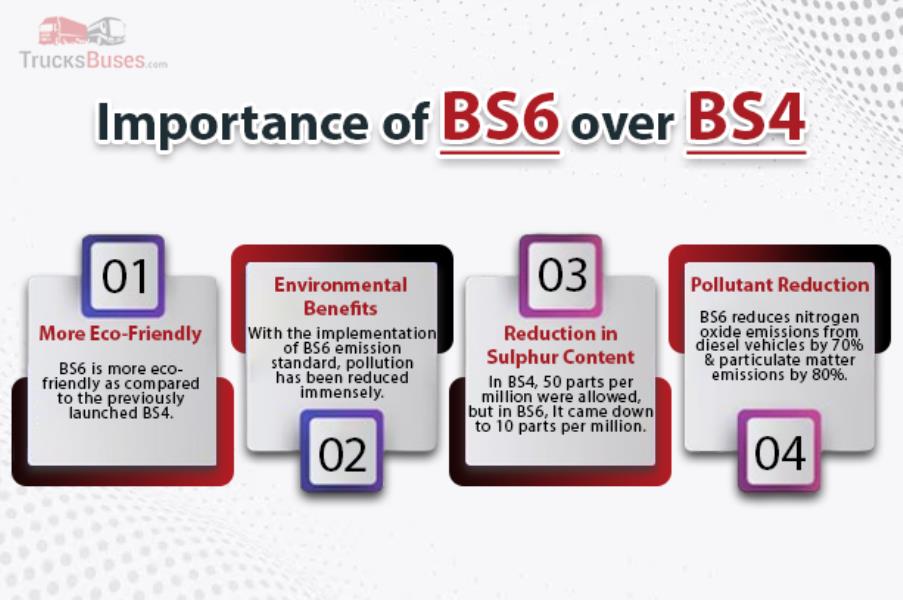Difference Between BS6 and BS4 - Which One is Better?
By | Published Date : May 31, 2024

India is facing one of the biggest environmental problems i.e. pollution right now. One of the main causes of this growing pollution in the country is vehicle pollution. There are lakhs of vehicles running on the roads which emit harmful gases such as carbon monoxide, and nitrogen oxide which are very harmful to people and the environment. These gases can cause serious health issues to the people and these are also the reason for global warming. Keeping in mind increasing pollution, the government established an organization called CPCB(Central Pollution Control Board), which gives regular advice and solutions to the government regarding pollution-related problems.
To counter this severe vehicle pollution, the government-run organization CPCB has started Bharat Stage Emission Standards (BSES) directed towards 2-wheeler and 4-wheeler vehicles.
Bharat Stage Emission Standards
Bharat Stage Emission Standards (BSES) is an organization which is run by the government. These are the government-operated regulations to regulate the emissions of air pollutants from internal combustion engine vehicles, including motor vehicles. Bharat Stage Emission Standards (BSES) are based on European emission standards. Other countries also have their emission standards which are established by their government to reduce vehicle pollution. BSES is focused on reducing harmful gases emitted by vehicles like carbon monoxide and nitrogen oxide. Since 2010 BS 4 norms have been introduced but since 2017 it has been enforced in the entire country.
Overview - BS 4
BS 4 also known as Bharat Stage 4 is the emission norms set by the government. It was enforced in the entire country in 2017. BS 4 was a significant improvement from previously launched BS 3 engine norms. BS 4 reduced the sulphur content, nitrogen oxide and hydrocarbons released from the vehicles. Pollutants from petrol passenger vehicles were restricted to carbon monoxide emission of 1.2 g/km, Hydrocarbons plus Nitrogen oxide discharge of 0.18 g/km and respirable suspended particulate matter discharge of 0.025. After the implementation of BS 4 norms in vehicles, BS 3 was completely banned in vehicles to contribute to the pollution-free environment.
Overview - BS 6
BS 6 or Bharat Stage 6 is the successor of previously launched emission norms BS 4. BS 6 came into effect on 1st April 2020. The government of India skipped BS 5 and directly jumped into BS 6 emission norms. There is a significant engine difference between BS 4 and BS 6. The main process of implementing BS 6 emission norms was to reduce the sulphur level, which was one of the main causes of increasing pollution. BS 6 emission standards lead to a significant reduction in the level of pollutants.

The government has the authority to reduce harmful gasses that are coming out of the vehicles, that's why they had to introduce BS 6. These BS 6 emission norms are applicable on cars, 2-wheeler and 3-wheeler vehicles, mini trucks, trucks, and buses.
Difference between BS 4 and BS 6
| Norms |
BS 4 |
BS 6 |
| Sulphur in fuel |
50 ppm |
10 ppm |
| Nitrogen oxides(NOx) diesel |
250 mg/km |
80 mg/km |
| Nitrogen oxides(NOx) petrol |
80 mg/km |
60 mg/km |
| Emission Control Technologies |
Basic catalytic converters and EGR systems |
Advanced catalytic converters. EGR, DPF, SCR |
| Addictive properties |
None |
Additives imitating lubrication properties of Sulphur |
| Particulate Matters (PM) Diesel |
25 mg/km |
4.5 mg/km |
| Particulate Matters (PM) Petrol |
Not specified |
4.5 mg/km |
| Impact on Health |
Not a lot of health benefits |
Significant health benefits |
BS 4 vs BS 6 Which is Better
BS 6 is better than BS 4 as far as the environmental and health benefits are concerned. BS-VI contains a sulfur content in the fuel of only 10 parts per million (ppm), as compared to 50 ppm in BS 4, facilitating the use of advanced emission control technologies like diesel particulate filters (DPFs) and selective catalytic reduction (SCR) systems. There are more harmful gases emitted from vehicles. Concerning this, BS 6 imposes standards on harmful emissions of gases. It includes a 70% reduction of nitrogen oxides (NOx) and an 80% reduction in particulate matter as compared to BS 4.
Price Difference in BS 4 vs BS 6 Vehicles
The change from BS 4 to BS 6 emission standards has significantly led to a price increase as their is technological upgrade in the vehicle. BS 6 has advanced emission control technologies. These upgrades include diesel particulate filters and selective catalytic reduction(SCR) systems. The implementation of on-board diagnostics (OBD) had also increased the final cost of the vehicles. The government has invested a lot of money to implement BS 6 emission standard in the vehicles.
Even after their is increase in the final cost the vehicle, it is still justified as it emits less pollution and has a positive impact on the environment.
Read Also:
What's special about the new BS6 Phase 2 Tata trucks and buses